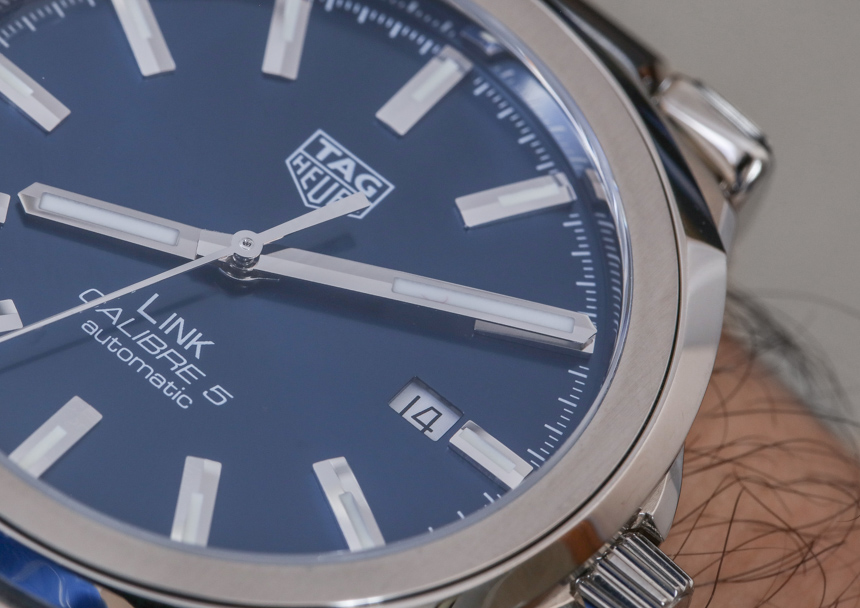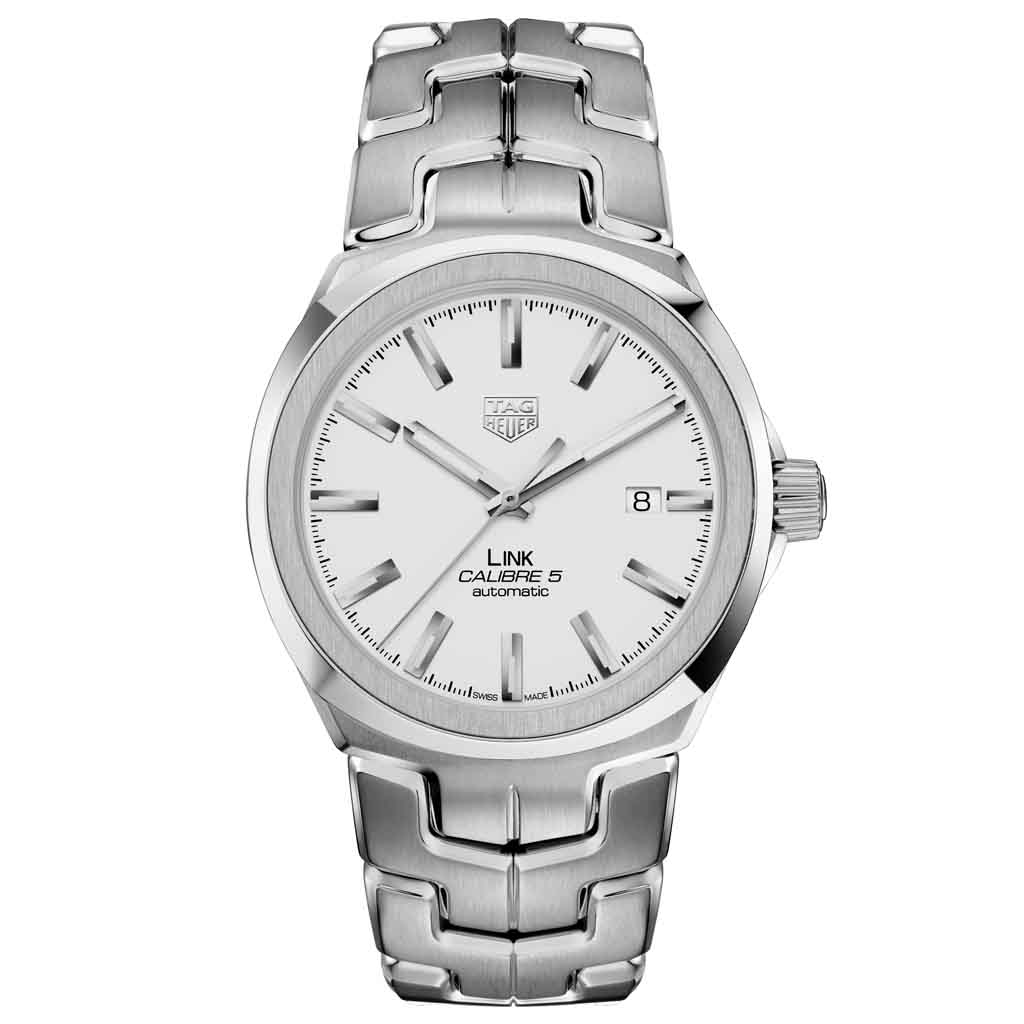

The Steel Link Calibre 5 carries a retail price of $3,000. An appliqué TAG Heuer logo appears at 12 o’clock, and the date is in a window at 3 o’clock. Each features baton-shaped steel hour markers and steel hands, all coated with white Super-LumiNova. Three dial colors are offered: silver-plated, black and blue with a sunray finish.

The movement, as proclaimed on the dial and in the model’s name, is TAG Heuer’s self-winding Calibre 5 (based on either the ETA 2824-2 or the Sellita SW200), which powers the watch’s simple three-hand time display with date indication and which is visible through a clear sapphire caseback. The steel bracelet, with its combination of brushed and polished finishes, integrates seamlessly and fluidly into the case, which measures 41 mm in diameter and features a scratch-resistant, nonreflective sapphire crystal. The TAG Heuer Steel Link for Men Calibre 5 retains the bracelet that debuted on the Link Lady, with two rows of S-shaped links, each rounded on the top, bottom and sides.

The Link Lady designed for Bella Hadid features a clouded black mother-of-pearl dial, diamond indexes, and a diamond-set bezel.Īlso in 2017, TAG Heuer celebrated 30 years of the Link on the market (designating the S/El’s launch year of 1987 as the starting point), with a redesigned version for men. Several dial colors, including a blue-gray mother-of-pearl and, in the black ceramic model, a cloudy black mother-of-pearl, were offered, as well as several diamond-set versions. Measuring a dainty 32 mm in diameter, the watch was offered in both stainless steel and, for the first time in the Link collection, ceramic cases. TAG Heuer also further streamlined and squared the edges of the S-shaped bracelet links. The first hints of a revamp for the TAG Heuer Link sprung up in 2016, with the somewhat quiet launch of a new Link model for women, the Link Lady, which introduced a modernized version of the classical Link case that deftly merged a cushion-shaped base, bearing four softly edged corners, with an enlarged, overlaid bezel ring. TAG Heuer, however, was not prepared to abandon the model that had essentially carried the company through the challenging transitional years between Quartz Crisis and Mechanical Revival. The success of this endeavor meant that the Link would fly under the radar in the following years, making space in the portfolio for new iterations of the Carrera, as well as the also-iconic Monaco (famously launched in 1969 as one of the first self-winding chronograph wristwatches but which had, like the Carrera, been relegated mostly to nostalgia status throughout the ’80s) and avant-garde products like the Heuer 02-T tourbillon and the TAG Heuer Connected Watch. The company’s new leadership under LVMH had lured Jack Heuer, scion of the watch company’s founding family, back into the fold as Honorary Chairman, and the result was a renewed commitment to reviving his most legendary brainchild, named after the tortuous Carrera Panamericana road race, as a leader model for the 21st century. While all this was happening, however, the iconic Carrera model, first launched in 1963, was quietly reclaiming its place as TAG Heuer’s preeminent sports watch collection. The Link – offered in both quartz and automatic versions – would be the last new product launched by TAG Heuer before it was acquired in 2001 by luxury group LVMH (Moët Hennessy Louis Vuitton), a transaction that would prove significant both for the Link collection and for the older, mostly dormant heritage models that it had largely replaced as the brand’s dominant sporty collection by the end of the 20th century: the Carrera and Monaco.Ī vintage advertisement for the TAG Heuer Link emphasizes the unique shape of the bracelet links. The rounded pebble-like edges of the case and bracelet links were slightly squared off, the S/El’s “Mercedes” hands were replaced by sword-style hands, oversized Arabic numerals were added at 12, 6 and 9 o’clock, and baton indexes supplanted the rounded, luminous indexes at the other hour markers. In 1999, with the mechanical watch renaissance just beginning to gather steam, TAG Heuer revisited the S/El, renaming it the Link to reflect the collection’s defining feature, and making a handful of small but significant aesthetic changes. The Link was TAG Heuer’s best-selling model during the 1990s.


 0 kommentar(er)
0 kommentar(er)
